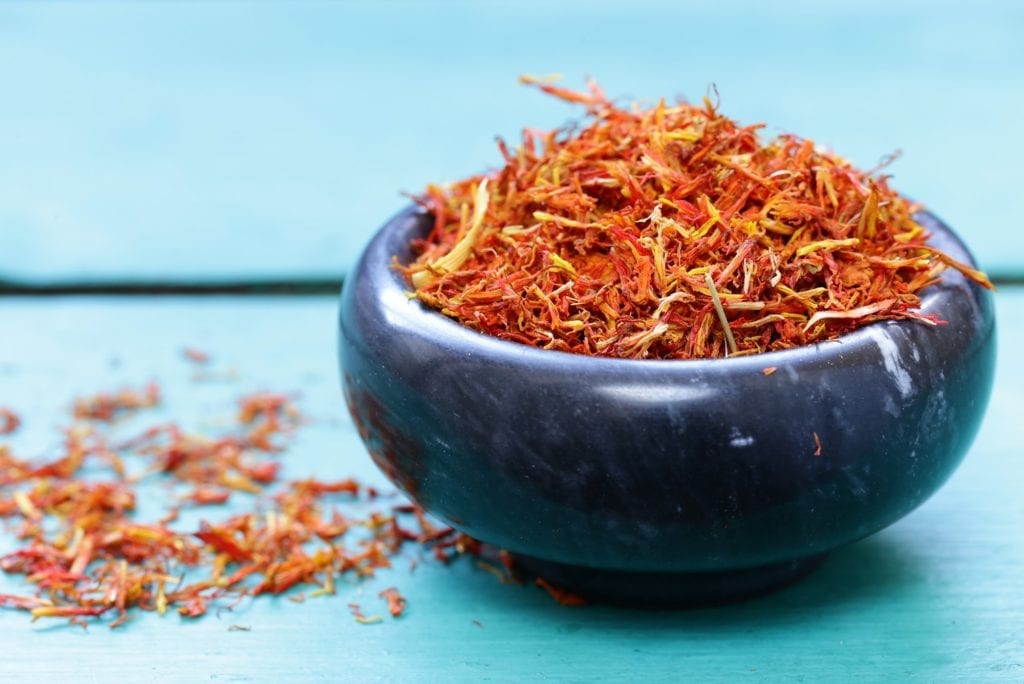
Saffron is golden orange in colour and consists of small, fine threads which is used as a seasoning and colouring agent in many foods, including Indian cuisine.
It is the most expensive spice in the world, and is even more expensive than gold, due to the intensive effort required to produce and harvest it.
It can be used as a hair or clothing dye, has numerous medicinal purposes and is equally versatile when used in the cooking of sweet and savoury dishes.
The flavour is very subtle, but its aroma is often said to be pungent, being earthy and hay like.
Saffron is not all the same quality or strength and when buying saffron chose threads that are the same length and highly coloured, Saffron with broken threads or dull cloud are less effective and not worth the cost.
Background
The name comes from the Arabic word Za’faran which means yellow.
It is thought that it came originally from India via western Asia and then on to Spain where it was used by the Moorish Arabs. The Moors introduced Saffron to the rest of Europe.
Saffron is the stigma of a type of crocus and each flower must be hand-picked just as the flower is opening in order to extract the saffron inside. It takes 70,000 crocus flowers to obtain just 500 grams of dried saffron.
Once picked the stigma is dried for around twelve hours and is then sold by weight.
Ancient Romans steeped saffron in their wine because they believed it prevented hangovers!
Uses for saffron
To get the maximum flavour from saffron it should be prepared as an infusion in liquid. It should be crushed in a pestle and mortar with boiling water then poured over and left refrigerated for several hours before using the resulting liquid.
Typically, a pinch of saffron strands to two hundred millilitres of water is a suitable ratio. If using without steeping, one pinch of powdered saffron is enough to provide colour and flavour. Any more will tend to make the dish taste bitter.
In Indian cooking saffron is most commonly used to colour rice yellow (such as pilau rice) and in biryanis.
Medicinal Uses
Saffron is a powerful antioxidant and is also said to have antidepressant qualities.
Research indicates that it can positively affect mood, memory learning ability as well as protecting the brain cells from progressive damage.
Other scientific studies have shown saffron to be effective at cellular level at destroying cancer cells, or in suppressing their growth.
There is some evidence that saffron can also help to relieve symptoms of premenstrual syndrome by smelling it for around twenty minutes.
Other described positive effects are in the treatment of decreased libido, as an appetite suppressant, lowering cholesterol, lowering blood sugar levels, improving eyesight in adults with age related macular degeneration, and improving memory in patients with Alzheimer’s disease.

